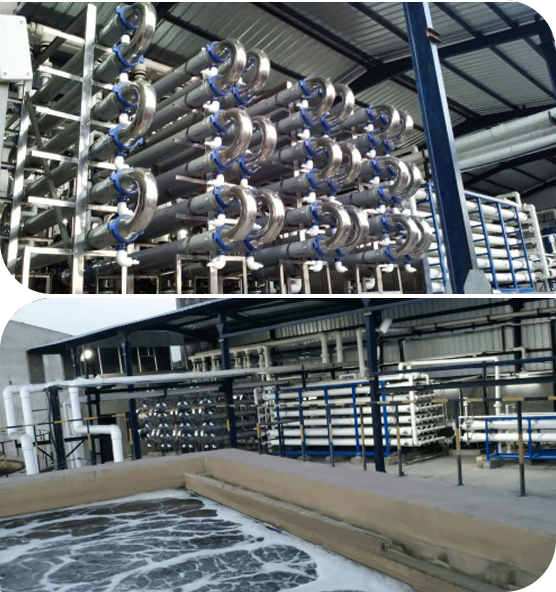An Unbiased View of Zld System Manufacturer Zero Liquid Discharge System

Waterman Engineers Australia has become the leading companies of Zero Liquid Discharge technique. A ZLD technique is often a procedure system which is used to eliminate many of the liquid squander from a system. The goal of ZLD h2o cure is to scale back wastewater economically and make potable water that is in good shape for usual use. Zero discharge technique is an advanced procedure system that comprises ultrafiltration, reverse osmosis, evaporation and fractional electro deionization. And we're a nicely-recognised supplier of ZLD systems.
In lots of Industries, including power, oil & gasoline, chemicals, mining and Some others, a large amount of wastewater is created that has to be managed. Conventionally, this discharge of wastewater is completed via a plant outfall to your surface drinking water body like an evaporation pond, or sometimes deep well injected. These procedures lead to a lot of environmental concerns by the public in lots of locations of the planet, as drinking water is usually a scarce source and its management really should be monitored. These concerns have resulted inside the institution of ZLD procedures by many industries to lessen their environmental footprint and boost sustainability. And, Waterman Engineers Australia are most effective ZLD suppliers you'll find for This technique.
Homes OF ZERO LIQUID DISCHARGE Process
The Attributes of a Zero Liquid Discharge method may vary depending upon the specific style and technological innovation applied. Having said that, some popular Attributes of ZLD systems include:
H2o Conservation: One of the first targets of ZLD devices will be to conserve water by reducing the discharge of liquid squander to the surroundings.
Higher Water Purity: ZLD units are built to make large-high quality h2o that is definitely cost-free from impurities and contaminants, which makes them well suited for use in lots of industrial processes.
Flexibility: ZLD methods are often intended to accommodate a wide array of enter liquid streams, which makes them multipurpose and appropriate for use in various industries.
State-of-the-art Wastewater Therapy: Zero liquid discharge units use Innovative wastewater treatment ways to remove impurities and contaminants through the effluent, producing substantial-quality drinking water.
Squander Reduction: ZLD units aid cut down waste by lowering the amount of liquid squander that should be disposed of and by creating a concentrated, reliable squander material that may be safely and securely disposed of.
Electrical power Efficiency: ZLD methods might be Electrical power-intense because of the large Strength prerequisites of evaporation and other wastewater remedy processes. Nonetheless, improvements in know-how are earning Zero liquid discharge units more energy-efficient and price-helpful.
Waterman Engineers Australia manufactures Zero Liquid Discharge (ZLD) units meant to take out all liquid squander, aiming to supply potable water and minimize environmental impact. Their ZLD units ordinarily include things like ultrafiltration, reverse osmosis, evaporation, and fractional electro deionization. Essential technologies used are Slipping Film Brine Concentrators, Compelled Circulation Crystallizer, and Some others, by using a two-stage means of pre-concentration and evaporation/crystallization to recover and reuse drinking water. These techniques are adaptable to different industries, emphasizing drinking water conservation, higher h2o purity, waste reduction, and Electrical power effectiveness. Technological requirements are varied and customizable, looking at aspects like h2o source, move charge, and feed h2o top quality.
The necessity for Zero Liquid Discharge (ZLD) systems arises within the necessity to handle environmental concerns connected with h2o scarcity and pollution. In industries like electricity, oil & fuel, and mining, huge amounts of wastewater are produced. Traditionally, this wastewater is discharged into bodies of water, triggering air pollution and depleting clean water assets. ZLD devices aim to minimize these impacts by treating and recycling wastewater in the economic system, thereby conserving water, lowering waste, and selling sustainability.
When thinking about the technological technical specs of the Zero Liquid Discharge (ZLD) technique, critical elements to concentrate on include things like the drinking water supply it is going to deal with, the system's flow charge, the quality of feed water, the stages of treatment associated, the Restoration level of drinking water, approaches for concentrate disposal, components of design, operating conditions, and system automation and Command. These aspects ensure the method's usefulness, sturdiness, and effectiveness in treating and recycling industrial wastewater.
Zero Liquid Discharge (ZLD) crops give benefits such as water conservation, squander reduction, and pollution avoidance, contributing to environmental sustainability. They're relevant in industries like electric power generation, oil and fuel, chemical substances, and mining, exactly where they help in taking care of industrial wastewater correctly, lessening the ecological footprint, and complying with rigid environmental regulations. These techniques are critical in regions going through water scarcity and for industries aiming to further improve their sustainability and operational efficiency.
FAQs for the Zero Liquid Discharge (ZLD) program frequently handle its operational principles, Value-effectiveness, upkeep necessities, environmental influence, applicability across several industries, and regulatory compliance. Zld System Manufacturer Zero Liquid Discharge System These queries assistance consumers fully grasp the system's Rewards, specialized requires, and suitability for his or her particular wastewater management wants.
1. Zero Liquid Discharge (ZLD) is often a wastewater procedure procedure created to remove all liquid waste.
2. The process's factors are affected by the precise industrial system, wastewater composition, and regulatory requirements.
three. Effluent procedure crops take out pollutants from textile effluents to circumvent environmental contamination.
four. Strengths involve h2o conservation, pollution reduction, and regulatory compliance.
5. The objective is to attenuate environmental effects by recycling h2o and cutting down waste.
6-nine. Effluent treatment method vegetation are stages in wastewater procedure: Most important (Bodily separation), secondary (biological treatment), and tertiary (advanced procedure).
10. Device functions contain filtration, sedimentation, biological cure, and disinfection.
11. Restricting parameters are variables that have an effect on the therapy's performance, like pH and contaminant concentration.
twelve. Design and style considerations involve circulation price, effluent composition, and wished-for good quality of handled h2o.